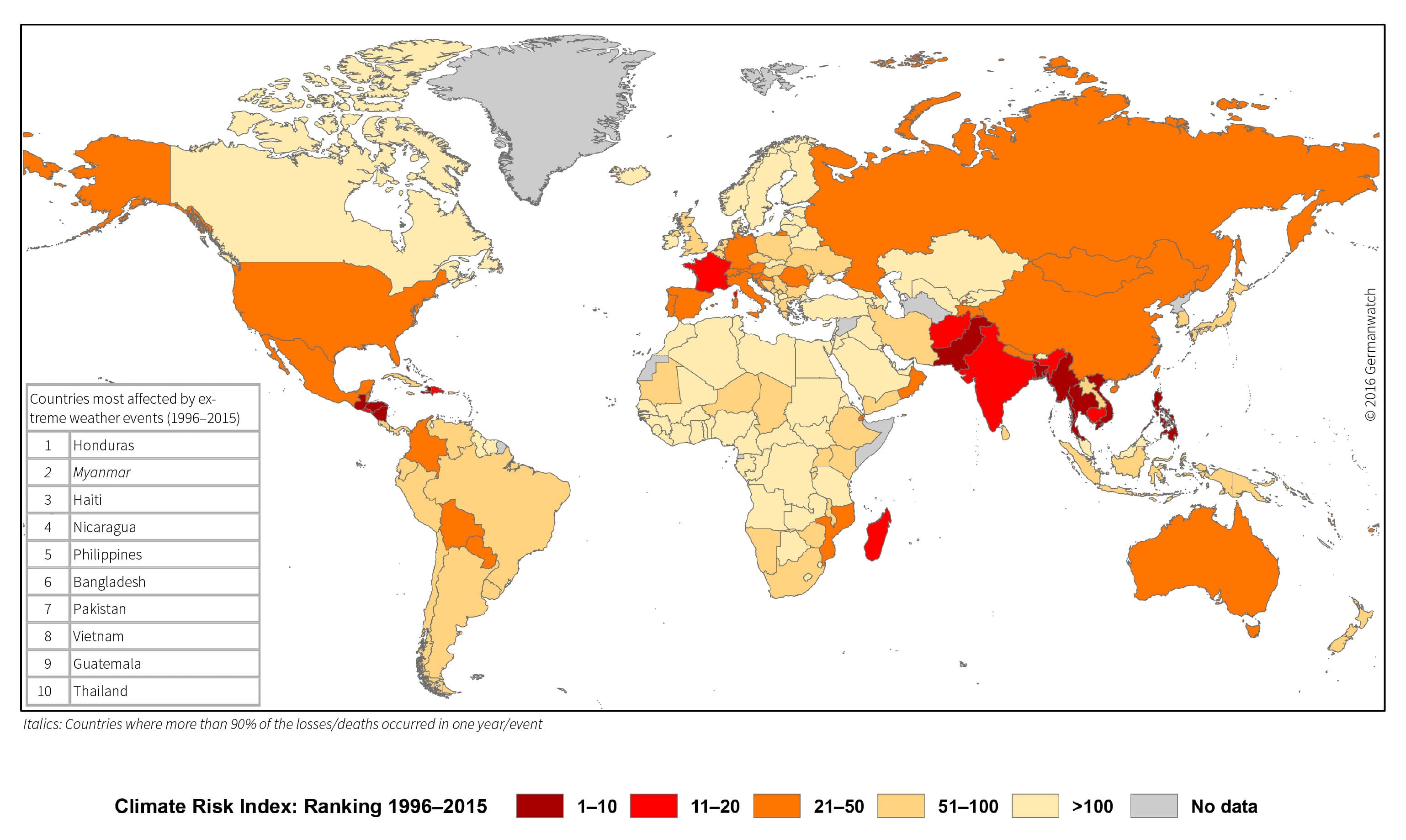Extreme and erratic weather conditions, regular floods and lower agricultural outputs call for urgent adaptation reforms to counter the adverse effects of climate change in Pakistan.
Currently, Pakistan ranks seventh in the 10 countries that are most affected by climate change globally, with 133 events directly attributed to it in the last two decades and costing the country $3.82 billion in losses.

According to the Ministry of Climate Change, agriculture and food security in Pakistan are particularly threatened due to increased heat and water stress on crops and livestock, as well as a higher frequency of floods and droughts resulting from changes in climate.
A 2013 report claims that the temperature increases in Pakistan are expected to be higher than the global average, resulting in reduced national agricultural productivity.
The minimum and maximum temperatures during summers and winters have increased throughout the country. While the temperatures have risen, the summer season has become prolonged and winter has become shorter. The heat wave period has also increased by 31 days during the years 1980 to 2007.
The report explains that an increase of 1 degree Celsius in mean temperature may reduce wheat yield by 5 to 7 percent in the country.
A 1 degree increase in average temperature during sowing stage, which is from November to December, may reduce wheat yield by 7.4 percent. Shortened growing seasons may lead to a decline in yields by 6 to 11 percent in wheat and 15 to 18 percent in basmati rice by 2080.
“The foremost problem we are facing is that our cropping patterns of agriculture have been disturbed due to changed weather patterns,” says Syed Rizwan Mehboob, the Prime Minister’s focal person on climate change.
Read more: Pakistan at Risk
To counter these effects, adaption reforms may include drip and sprinkler irrigation technology, well researched drought tolerant crop varieties and climate monitoring and information-early warning system. However, roadblocks exists in the implementation of these reforms.
The Ministry of Climate Change states, “high initial cost of installation and maintenance for drip and sprinkler systems and early warning system are identified as the key financial barrier in the wide spread adoption of technology by the farmers and communities. The main element of this barrier identified is the lack of trained technical staff locally available for the design, installation and maintenance of the technologies, high rate of taxes and custom duty imposed on import of technology parts, and a small, underdeveloped market for technology importers and suppliers in the country.”
Climate change also adversely affects livestock production, which could decline 20 to 30 percent due to rising temperatures, leading to crises in meat, milk and poultry supplies – pushing prices beyond the reach of the average Pakistani.
The agricultural sector would lose 2 to 15 billion dollars per annum due to climate change by the end of the 21st century.
“Livestock in the northern areas graze in the Alpine Meadows but now because of late snowfall the duration of these grazing grounds have decreased,” says Mehboob. “And the livestock in the Punjab Plain suffers as low agricultural output lead to less feed for them. It is the duty of the agriculture research institutes to come up with such livestock and crop varieties that can adapt and are resistant to all climate change vulnerabilities.”

Global warming, which leads to rapid melting of glaciers has consequential effects on the river flows in Pakistan – more water is available causing floods and severe droughts afterwards.
“The severe floods of 2010 were attributed to the rapid melting of northern glaciers and erratic monsoon rains in the northern areas, which dangerously coupled to produce the unprecedented floods in Pakistan that wiped off 5 percent of the national GDP through massive losses to human lives and infrastructure. Climate change is predicted to cause more such floods followed by periods of droughts as the northern glaciers rapidly melt and eventually vanish,” says the Ministry of Climate Change.
According to a National Climate Change Policy Draft, the projected recession of Hindu Kush-Karakoram-Himalayan (HKH) glaciers due to global warming and carbon deposits from trans-boundary pollution sources threatens the water inflows into the Indus River System.
“Unpredictable weather patterns in terms of floods and heavy monsoons need to be dealt with appropriate water management including proper irrigation practices,” says Mehboob. “We need to increase water conservation, so when we have surplus of water we are able to store it and in times of scarcity be able to use it more efficiently. Demand management of water resources is what is required.”
However, while policies are being drafted since almost a decade now, identifying a plethora of ways in which the effects of climate change can be minimized or dealt with, no concrete actions are seen by the state as yet. Pakistan is now one of the worst casualties of climate change – making it imperative that the matter is not just discussed in theory but is strictly followed through at the implementation level as well.
This article originally appeared on MIT Tech Review Pakistan and has been reproduced with permission.














































